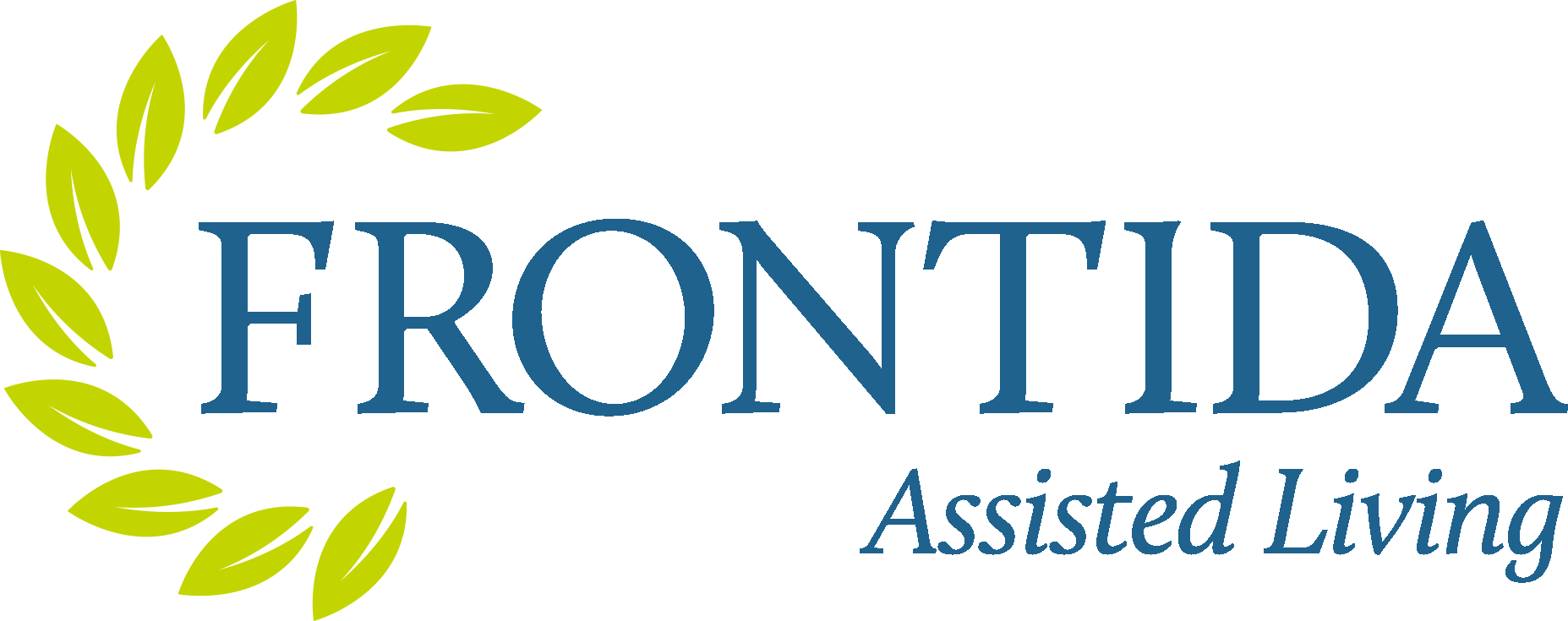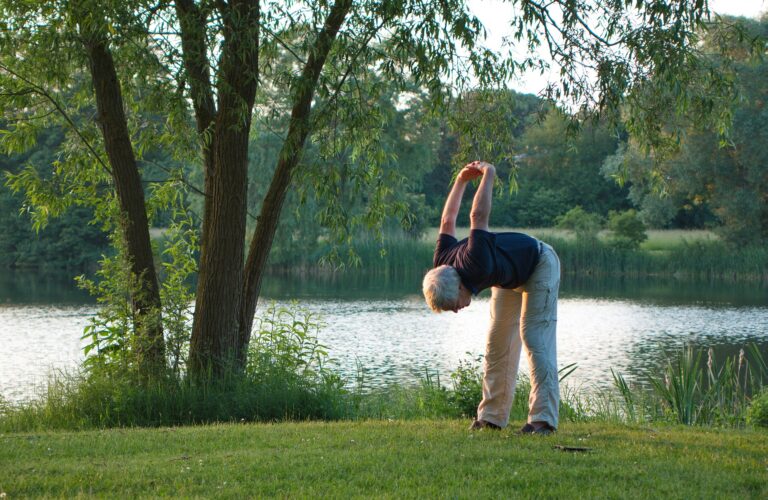It’s a popular meme: Exercise? I thought you said, “Extra Fries!” We laugh, we cry, we buy the t-shirt. Meanwhile, doctors and trainers shake their heads if the only thing that gets seniors’ blood pumping is “false news.”
In the “olden days,” getting exercise was easy. Part of living. Carrying water, walking the fields, scrubbing clothes. Walking from the trolley to work, maybe bicycling. Even ironing, cutting up chickens, pushing a lawn mower.
But today, as assisted living facilities’ La-Z-Boy chairs become more and more comfortable, we need to push ourselves—no matter our age—to move our muscles.
Is exercise really worth it? Let’s break down the basics of the better meme, good things come to those who sweat.
Exercise not only changes your body,
it changes your mind, your attitude, and your mood.
~anonymous

The “Why”
“Do something today that your future self will thank you for.”
~Sean Patrick Flanery
Most of us think exercise helps us lose weight. That calorie-in-calorie-out thing. It can do that. But it also offers a host of other benefits, especially for seniors.
Frontida Assisted Living Facilities, such as the Kimberly, WI, Senior Living and Memory Care Community, provide you with posts like this one to help you live your best life.
1. Prevent Disease
“If you don’t make time for exercise,
you’ll probably have to make time for illness.”
~Robin Sharma
You notice three things when you exercise: your heart pounds, your breathing increases, and your muscles ache. Plus, if you work hard enough, chances are there’s that sweat stuff.
But those three to four effects are just the tip of the disease-prevention dominos. Get the first ones moving, and the rest follow.
Exercise benefits all your organs and body functions.
- Heart health—That pounding makes your heart work better, more efficiently.
- Circulation—The more your heart pumps efficiently, the better your blood flows throughout your body.
- Lungs—Increased breathing inhales more oxygen (the good stuff), exhales carbon dioxide (the stale stuff) and makes it easier to keep doing so throughout the day.
- Kidney health—As the heart pumps more efficiently and circulation increases, the kidneys don’t have to work so hard, so they clean the blood better. That prevents kidney disease.
- Cholesterol, blood pressure, blood sugar—all lowered
- Fat around your waist—burned up
- Diabetes—improved
- Pain, heart disease, risk of some cancers–reduced
- Balance, flexibility, posture—the more you strengthen your muscles, the better they work, the easier you can take care of—
- Daily activities and self-care. You can reach your toes to keep your nails clean and cut. Which means healthier feet. Which means—
- Fewer falls. You’ve got balance, you’ve got moves. And it’s also easier to shower and scrub yourself (better hygiene and improved circulation—yep, it’s a cycle.)
- Fewer bone breaks. Physically active seniors have lower risks of hip fractures than inactive seniors. (You don’t use it, you lose it.)
So, yes, exercise can help you control your weight, but it’s so much more than just a weight loss regimen.
And it’s not just about the physical.
2. Improve Cognitive Function
“There’s no better feeling than stepping out on the field and stunning them all
by doing what none of them thought you could do.”
~Ashlyn Harris
Exercise doesn’t just make the heart and lungs work better. It makes your brain work better.
- Improved circulation and lung capacity means more—and heathier—blood to the brain.
- More oxygen and nutrients rush to the brain.
- Toxins, etc., get flushed out of the brain.
- Which means your brain works more efficiently on all counts.
But exercise also uses multiple areas of the brain. You’re moving arms and legs, remaining upright, following directions, listening to music, …
- You connect different parts your brain, building all-important pathways and firing synapses
- You keep your memory fresh and rejuvenated
- You improve movement, balance, processing, order, creativity, …
And an IMPORTANT NOTE: Afraid you can’t exercise because of Huntington’s, Parkinson’s, MS, or dementia? Throw on your favorite tunes. The music can help you dance, move, and walk.
Don’t believe me?
Watch this video of Larry, a patient with Parkinson’s, dancing. The music even helped him ditch his walker!
3. Improve Emotional Health
“Don’t limit your challenges.
Challenge your limits.”
~Jerry Dunn
Know that delicious sensation when you’ve been sitting for a while, and you stand up and stretch? The movement releases all sorts of tension in your neck, shoulders, and back, which in turn discharges emotional tension.
That’s a small-scale image of what exercise can do with your emotions as a whole.
- Release “Feel good” hormones—You’ve heard of the “exercise high”? Working out makes your brain release dopamine, serotonin, endorphins, and oxytocin, also called “happy hormones.”
- Decrease Depression—Yes, some of the decrease comes from that “Look what I just managed!” feeling. But you know how professionals say depression is often a “chemical imbalance”? Better circulation, blood flow, oxygen, …, balances said-chemicals.
- Decrease Anxiety—As your health improves, you worry less about your heart, lungs, blood sugar. Plus, you’re thinking better, forgetting less. So, of course, you’ll have less anxiety. But those feel-good hormones actually decrease anxiety and worry all on their own.
- Remove toxins—Getting rid of those little buggers helps you think better, remember? So you’re more likely to see reality for what it is versus blowing things out of proportion. (The cat is a cat, not a lion.)
- Decrease pain—Hence, the increased smiles.
- Increase Energy—As your heart, lungs, kidneys, brain work more efficiently, you gain that spring in your step—always an encouragement.
- Improve Sleep—Rotten slumber breeds a perfect grumpy storm. Your new energy means you’re more awake during the day and rest easier at night. Especially with less pain.
So exercise helps mind, body, and emotions. But it also helps you connect with others.
4. Increase Social Engagement
Dead last finish is greater than did not finish, which trumps did not start.
~anonymous
Sure, you can exercise alone. But together, with friends? It’s a party!
Working out together builds
- Connection, a Bond—Those who sweat together, stay together.
- A sense of Team. You’ve got a common goal, and you spur each other on.
- A Chance to talk, to share how the rest of your life is going. Whether it be the cutest thing your grandbaby just did or the latest results of some test.
- Laughter—You know once you start moving the stories will roll in.
Why Not?
“We do not stop exercising because we grow old.
We grow old because we stop exercising.”
~Dr. Kenneth Cooper
Okay, based on the quote, you know: that’s a trick subheading. There is no “why not.” Exercise is great for you all around.
But it is important to do it safely.
So we’ll cover the when, where, what, and how of exercise in the next post.
Meanwhile, check out this list of easy exercises you can do. There’s something for everyone, no matter how mobile you are.
But since we promised, here are a few simple moves to try now,
10 Moves to Try
Rome wasn’t built in a day,
but they worked on it every single day.
~anonymous
- Do windmills with your arms.
- Do bicycles with your legs. (Lying down, of course.)
- Play your favorite songs and dance. Or march in place.
- Have everyone in your assisted living facility walk around the room and fistbump everyone three times with both arms (Yep, like a gentle boxing move.)
- Then try across the body fistbumps (Your right to their right, your left to their left.)
- Do half-bicycles while standing. Hold on to a chair or wall, lift one knee, push your leg forward, bring it down and push it behind you. Like you’re pushing one side of your bicycle pedal. Repeat 10x on one leg, then 10x on the other.
- Before you get out of bed in the morning, lie flat on your back and pull your knees in one at a time, and then both together, toward your chest. Repeat 10x each.
- In that tucked position, carefully drop your knees to the right side of your body, return to the center, and then to the left, back to center. Repeat 10x. (Great for your core and balance!)
- Try the same exercises standing. Holding on to a chair, lift each knee (one at a time) as high as you can. Swing your knee out to the side, and back to center. (Yep, you can do the same exercises sitting in your favorite recliner. Each position works your abdominal core differently)
- Sitting around your assisted living facility living room with your friends, try a “wave.” No, not the kind where you say hello, but the kind you do at a stadium. Person by person, raise your arms, and put them down again, following around the circle. See how many times you can go around. As you get stronger, try to add standing when you raise your arms. (A great game for commercial breaks.)
The possibilities are endless. And they don’t have to be boring. But don’t stop with this list. Checkout these other senior-friendly exercises.
In Frontida Assisted Living Communities, your health and happiness is important. Contact us today to learn about our services!
Check out these other helpful posts on keeping seniors physically healthy.

Thank you Christian Northe from Pixabay for the featured image.
Elizabeth Daghfal is a writer, teacher, speaker, and community volunteer. When she isn't teaching or writing-- Who are we kidding? Her husband and five kids say she's ALWAYS teaching and writing. She has a passion to help people who are struggling and is happy to say her shoulders are drip-dry. Born and raised in the South, she now lives in Wisconsin and loves it--except for the fifteen months of winter. Read more about her at elizabethdaghfal.com.

